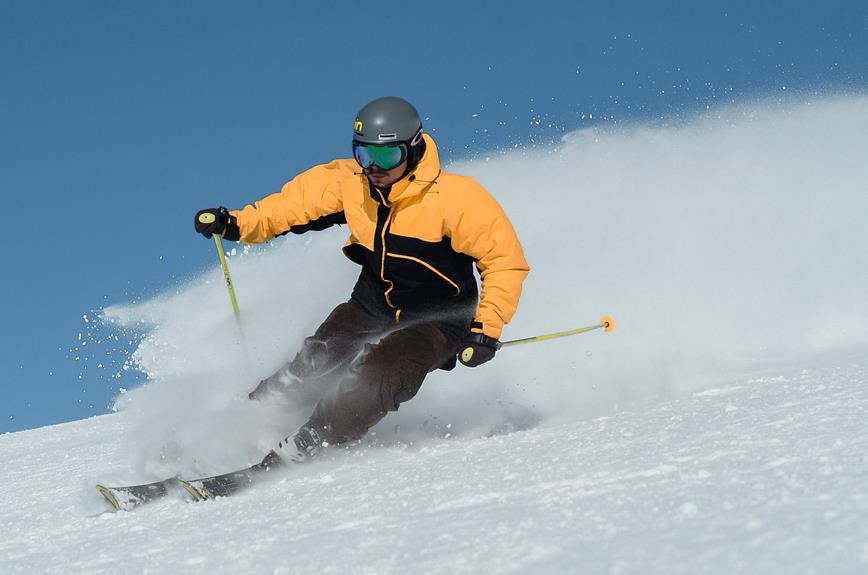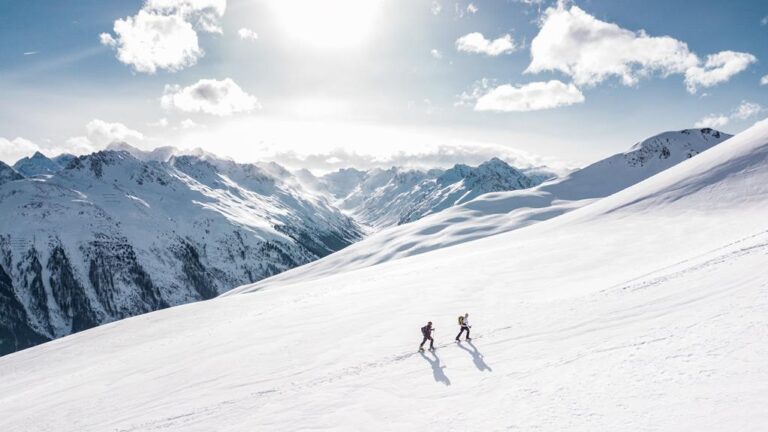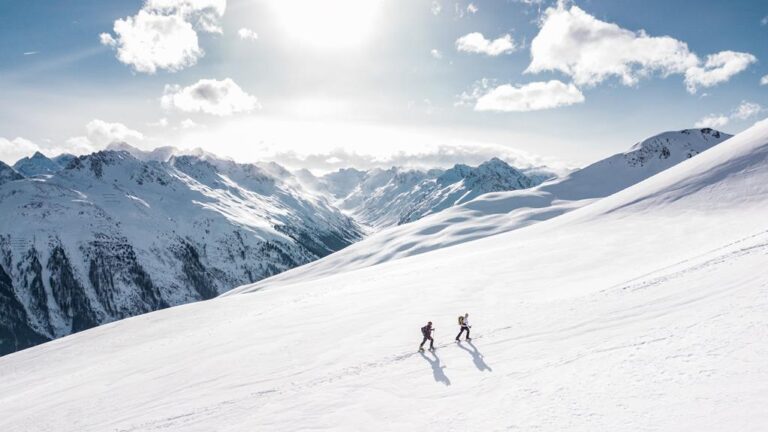Do You Wear a Hat Under Ski Helmet – Expert’s Choice!
Did you know that wearing a hat under a ski helmet might not be the best idea? While it may seem like a logical way to stay warm on the slopes, it can actually compromise the fit of your helmet and reduce its effectiveness in protecting your head.
But don't worry, there are alternatives available that can provide both warmth and optimal safety. So, should you wear a hat under your ski helmet? Let's explore the benefits, potential drawbacks, and alternatives to help you make an informed decision.
Benefits of Wearing a Hat Under a Ski Helmet
Wearing a hat under your ski helmet has several benefits that can enhance your skiing experience. Contrary to popular belief, wearing a regular beanie under your helmet isn't recommended. It can interfere with the proper fit of the helmet, compromising its effectiveness in protecting your head.
However, there are thin beanies specifically designed for wearing under helmets that offer extra insulation without compromising the helmet's fit. These thin beanies are made of lightweight materials that provide warmth without adding bulk. They're designed to be snug and comfortable, ensuring that your helmet fits securely on your head.
Another option is a balaclava made of technical material, which can provide additional warmth without affecting the helmet's fit.
Regardless of the type of hat you choose to wear under your helmet, it's crucial to ensure that the fit of the helmet isn't compromised. Wearing a hat that isn't specifically designed for helmet use can lead to an improper fit, which can significantly reduce the helmet's effectiveness in protecting you from head injuries.
Potential Drawbacks of Wearing a Hat Under a Ski Helmet
While there are benefits to wearing a hat under a ski helmet, it's important to be aware of potential drawbacks as well.
One of the main concerns is the compromise of helmet fit. Wearing a hat under the helmet can interfere with its proper fit, leading to discomfort and pressure on your head. This can be especially problematic during long skiing sessions, as an ill-fitting helmet can cause distractions and reduce your overall comfort.
Additionally, the effectiveness of the helmet may be reduced when a hat is worn underneath. Even thin hats can affect the helmet's fit, potentially diminishing its ability to provide optimal impact protection. Moreover, the space taken up by the hat inside the helmet can lead to incorrect sizing and fit issues, further compromising your safety.
It's essential to prioritize your safety over comfort when it comes to wearing a hat under a ski helmet. Consider using alternative solutions such as thin beanies specifically designed for helmet use or moisture-wicking balaclavas, which can provide warmth without compromising the fit and impact protection of your helmet.
How to Choose the Right Hat for Wearing Under a Ski Helmet
To choose the right hat for wearing under a ski helmet, consider the specific design and materials that will provide both warmth and protection without compromising the helmet's fit. Different hat materials for ski helmets can include thin beanies specifically designed for helmet use and balaclavas. These options are made from materials that are thin enough to fit comfortably under the helmet without affecting its effectiveness.
When selecting a hat, it's important to find the right size that will fit snugly under the helmet. A hat that's too tight can cause discomfort and restrict circulation, while a hat that's too loose may shift around and interfere with the helmet's fit.
Proper care and maintenance of hats worn under ski helmets are also crucial. Regularly washing the hat according to its care instructions will keep it clean and odor-free. It's recommended to air dry the hat to prevent shrinkage or damage. Additionally, inspect the hat for any signs of wear or damage, such as loose threads or stretched-out elastic, and replace it if necessary.
Tips for Properly Wearing a Hat Under a Ski Helmet
For optimal comfort and protection, it's important to properly wear a hat underneath your ski helmet. Here are some tips to help you stay warm and make the most of your hat-helmet combo:
- Look for thin beanies specifically designed for wear under helmets. These beanies are made with materials that provide warmth without affecting the fit of your helmet.
- Consider using moisture-wicking balaclavas made of technical material. These balaclavas not only keep you warm but also help to regulate moisture and sweat, keeping you dry and comfortable.
- Prioritize proper helmet fit. A well-fitting helmet ensures maximum protection and prevents discomfort. Make sure your hat doesn't interfere with the helmet's fit by choosing the right size and adjusting the straps accordingly.
- Choose a snow helmet with removable ear pads. This allows you to adjust the level of warmth based on the weather conditions. On colder days, keep the ear pads in for added insulation, and on warmer days, remove them for better ventilation.
- Take advantage of helmets with adjustable vents. These vents allow you to control the airflow and regulate your temperature. Open them up when you need to cool down and close them for added warmth.
Alternatives to Wearing a Hat Under a Ski Helmet
Consider other options for keeping your head warm under a ski helmet. While wearing a hat under a ski helmet may seem like a logical choice, it can actually interfere with the proper fit of the helmet and compromise your safety. Luckily, there are alternatives that provide insulation without interfering with the helmet's fit.
One option is to choose a thin beanie specifically designed to be worn under a helmet. These beanies are made with technical materials that provide warmth without adding bulk. They're designed to fit snugly without causing discomfort or compromising the fit of the helmet. Additionally, they often have features like moisture-wicking properties to keep you dry and comfortable.
Another alternative is to wear a balaclava made of technical material. These balaclavas provide full coverage for your head, neck, and face, and are designed to fit comfortably under a helmet. They offer excellent insulation without interfering with the fit of the helmet.
When choosing accessories for your ski helmet, it's important to prioritize both warmth and protection. Opt for accessories specifically designed for use with helmets to ensure a proper fit. Remember, a properly fitting helmet is essential for optimal protection on the slopes.
Frequently Asked Questions
Should I Wear a Hat Under My Helmet?
You might consider wearing a hat under your helmet for added warmth. It can provide extra insulation and protect your head from the cold. However, be aware that it may affect the helmet's fit and comfort.
How Do You Wear Your Hair Under a Ski Helmet?
When wearing a ski helmet, you can try braided hairstyles or ponytail options to keep your hair out of the way. Another alternative is using headbands to keep your hair in place and add some extra warmth.
What Is the Best Hair Style for Under a Ski Helmet?
To find the best hairstyle for under a ski helmet, consider protective hairstyles that keep your hair secure and out of the way. Hair care tips vary for different hair lengths, so choose a style that works for you.
What Do You Wear Under a Helmet?
You can wear a headband or a thin beanie under your helmet for extra warmth. The helmet liners provide insulation, and the ear warmers offer added protection. Just make sure it doesn't affect the helmet's fit.
Conclusion
In conclusion, wearing a hat under a ski helmet may have some benefits in terms of extra warmth, but it can also compromise the proper fit and effectiveness of the helmet in protecting your head.
It's important to prioritize both warmth and protection by choosing the right helmet and accessories, such as thin beanies or moisture-wicking balaclavas, specifically designed for wearing under helmets.
This will ensure a proper fit and optimal safety on the slopes.






